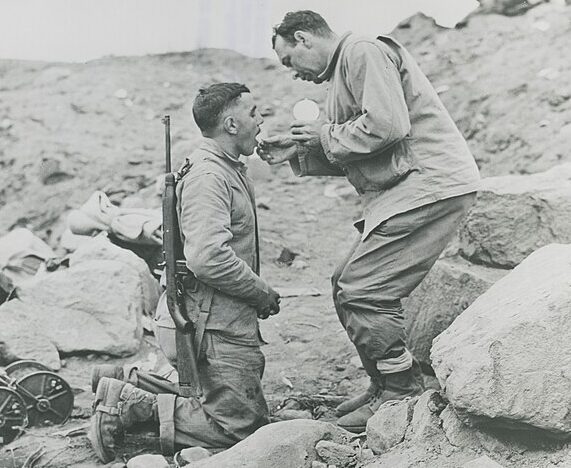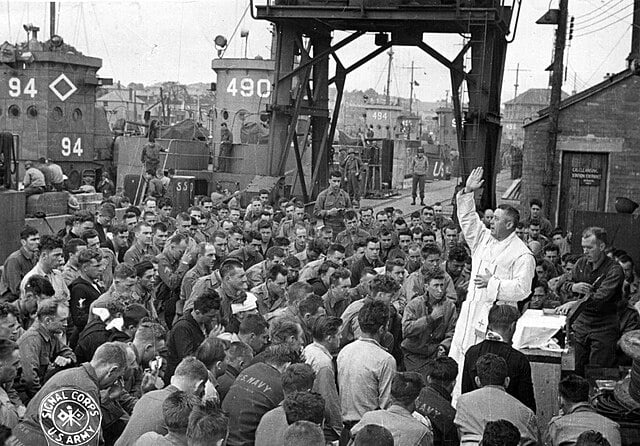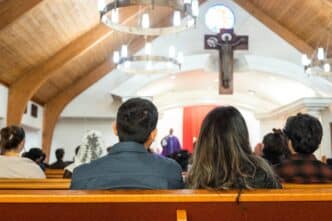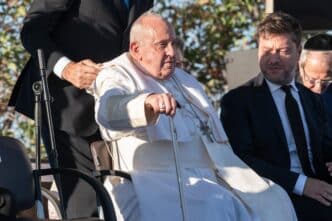Given the emphasis on “separation of church and state” in this country, it may surprise some people to learn that, once upon a time, the U.S. government paid to train Catholic men to be priests.
In 1944, the country had been at war against Germany, Italy and Japan for almost three long, exhausting years. An astounding 14 million young Americans fought — about 10% of the country’s total population at the time. Many died. Many were wounded.
The United States and its allies were winning the war, meaning that these young men and women would soon come home to resume their lives, reviving the hopes that they had cherished.
Everyone felt that the country owed them much. Congressional Democrats and Republicans eagerly came together to pass what was called the “GI Bill.” President Franklin D. Roosevelt happily signed it into law June 22, 1944.
Returning soldiers, sailors and airmen who wished to buy a home were able to borrow money at a very low rate of interest. The government guaranteed the loan. And if they wanted to pursue an occupation requiring college training, the government provided, whatever the interest: mechanic, journalist, auditor, schoolteacher, physician or Catholic priest.
Thousands upon thousands of young men who fought in the war went to the seminary. Uncle Sam cheerfully paid the bills.
Why was there a priest boom?
It was the “Golden Age” of priestly vocations in America, not because the government financed priestly formation, but because so many veterans wanted to be priests.
Few priests of that generation are still alive, but at the time many spoke of their decision to enter the priesthood.
Almost all said that the war opened their eyes. Drawn into circumstances in which human life was regarded as cheaper than dirt and killing an opponent was considered the only way to solve differences, they had seen human evil at its utter worst. They learned firsthand what happens when God is removed from life.

They realized how much they needed God and how beautiful life can be if it is lived with God. They were determined to make God supreme in their own lives and to take God to others.
About 50 years ago, vocations stalled in this country and across Western society, and not because the GI Bill expired in 1956. With vocations soaring in Africa and Asia, American, Canadian and European Catholics must ask themselves why priestly vocations are uniquely declining in their societies.
The “vocations crisis” is not confined to the Catholic Church. Protestant, Orthodox and Jewish communities are experiencing clergy shortfalls as bad as, or even worse than, what is occurring in Western Catholicism.
Why is there a priest crisis?
The overall reality, aggressively consuming multiple aspects of Western culture, is a general dismissal of God and of God’s law.
No sane person would call war a blessing in disguise, but maybe one cause of institutional religion’s problems is that North Americans and Western Europeans, in their wealthy, secular, comfortable democracies, have it so good. Increasingly, they see no need for God.
Every church’s membership is dropping, often dramatically. Catholics cannot whitewash their own losses by reporting that immigrants are filling Catholic churches.
Look at morals. Behavior once shocking to all, vigorously condemned by all denominations, is now accepted, indeed demanded.
It is no wonder. Authentic religious belief must be intensely personal, but it suffers, or even dies, without the support, inspiration and direction provided by churches.
Dismiss hunches. Priestly celibacy and the all-male priesthood are not the problem. Protestant ministers, Jewish rabbis and Orthodox clergy are often married. Many Protestant ministers and Jewish rabbis are women.
The clergy sex abuse crisis struck Catholics hard, but the shortage in vocations long predated that.
Things will change when we learn what those soldiers learned. Life without God is a disaster.







